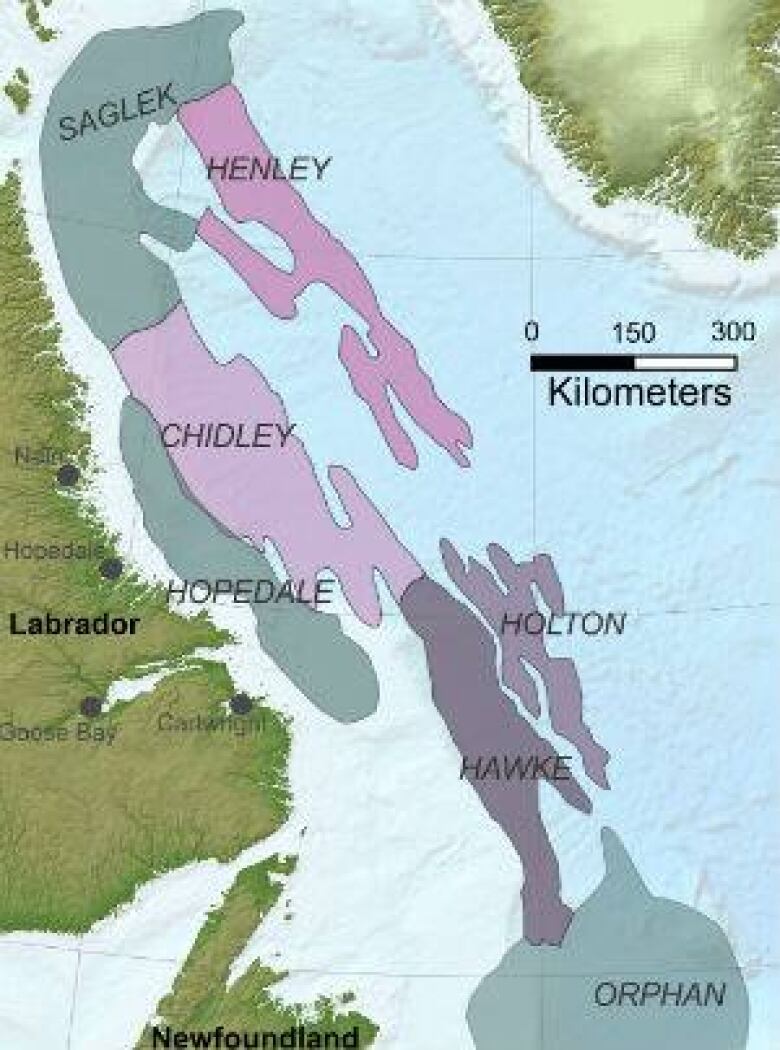Rezori | Why Nalcor is betting big on our seismic future

Let's start at the beginning — well, maybe not at the very, very beginning, but at least at the beginning of our understanding of how continents have been behaving throughout earth's more recent history.
About two billion years ago (give and take a few hundred million), most of the earth's land masses were jammed into one supercontinent which has been given the name Columbia.

And so it goes.
Rodinia lasted about 350 million years, broke up and begat Pannotia.
Pannotia existed for about 60 million years and begat Pangaea.
Pangaea came into being around 300 million years ago, lasted for about 200 million, then started breaking up as well. It's during that break-up that North America separated from Europe, South America from Africa, and that the widening gap between those four new continents filled with water and became the Atlantic Ocean.
Seismic strategy
Now let's fast-foward to a recent interview I had with Jim Keating, vice-president of gas and oil for Nalcor, the province's public energy corporation.

The purpose of the survey is to map the rock structure of the ocean floor in and around the Flemish Pass and on the Labrador Shelf.
The Canada-Newfoundland and Labrador Offshore Petroleum Board will put exploration licences for those areas up for auction November next year and again in 2017.
By then, Nalcor and its partners will have spent more than $100 million surveying them. The information will be sold to any exploration company interested.
Nalcor's partners are looking to make money. The objective of Nalcor itself is primarily to raise awareness of what might be out there.
"Before the licences are awarded, that's the moment to get the world's attention," Keating told me. "You get those exploration companies, they scour the world for the next best opportunities. And what Canada has to do, Newfoundland and Labrador in particular, we have to compete."
And things are looking good.
Preliminary survey results show the existence of large geological structures along the Labrador Shelf and further south which have all the early characteristics of containing not just gas but oil as well. This, Keating says, came as a surprise.
Let's go back to Pangaea, or what's left of it. The same forces that started breaking it up 100 million years ago are still at work today.
Rethinking what we know
Heat from the earth's mantle started rising along a line which ran down the middle of the old supercontinent and basically cracked it in half. With the heat came molten rock, which pushed the two halves apart and formed the expanding floor of the Atlantic Ocean.

Keating says for the longest time geologists thought so as well, which explains why most of the information about the geology of the Labrador Shelf, for example, is 30 to 40 years old.
Keating says what the new information indicates is that all along, from its early beginnings as a narrow sea to its current state of a large ocean, the Atlantic has had huge and unstable shorelines, even as far north as Labrador, where life was plentiful and repeatedly buried by sediments and underwater landslides.
"And where maybe the world oil and gas companies thought that between Greenland and Labrador would have been largely oceanic crust, or maybe deposition of sediments too thin to hold any real chances of hydrocarbons, we're seeing entirely the opposite. We're seeing thousands of metres of sediments deposited."
The strategy: shake things up
Chances are that the companies that have already been exploring and drilling here are quite aware of all this from their own seismic surveys. But those surveys are usually kept tight industrial secrets, which has tended to limit participation in oil exploration here to the handful of companies already involved.
We need more entrants. The more companies we can have with access to this data, I think the better off we are in the long run.- Jim Keating
By making the information available to all and sundry, Nalcor's strategy is to shake things up.
"We need more entrants," Keating says. "The more companies we can have with access to this data, I think the better off we are in the long run."
"We certainly have had many global players interested in our data and have licensed our data. And in particular we focused on those companies that are new to our area. So we would have been all over the world at conferences, seminars, even on a one-on-one basis for many days, many hours at a time, with a lot of companies."
And so Nalcor's multi-million-dollar gamble is on.
Taking a very, very long look forward ...
In the meantime, there are already speculations what the next supercontinent will look like. Among three proposals submitted so far is Pangaea Ultima, which would form within the next 250 million years.
You'd have to make very different travel arrangements for your holidays on that one.
No more scenic drives up and down the Atlantic seabord, or vacationing on the beaches of Normandy. The Atlantic Ocean would have closed in again.
South America would end up wrapped around South Africa, with Patagonia snuggling up to Indonesia.
Say goodbye to a Mediterranean cruise. North Africa would be so tightly jammed up against South Europe, there'd be a mountain range tall enough to dwarf the Himalayas.
Newfoundland and Labrador would be somewhere in the middle of it all, hopelessly landlocked. Nalcor, if still around and still gambling, would have to put its bets on something very different from offshore oil and gas.

